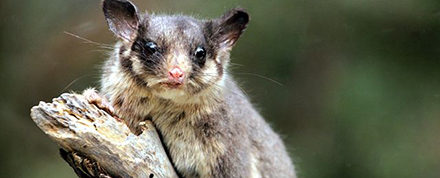
This week’s ABC Four Corners report on threatened species has been strongly criticised as one-sided and pushing an anti-forestry agenda. The program featured three scientists who claimed the Leadbeater’s Possum (LBP), whose status as critically endangered was upheld by the Federal Government this week, was doomed if the timber industry in Victoria’s Central Highlands was allowed to continue. Source: Philip Hopkins for Timberbiz
Mark Poynter, an author, consultant and Fellow of the Institute of Foresters of Australia, said it was well documented that sustainable forestry had never been responsible for any fauna or flora extinction.
Yet the program on the threat of extinction in Australia devoted almost half of its time to the issue of forestry.
“This suggests a complete lack of perspective on what the real threats are to Australian wildlife in order to push an anti-forestry agenda,” he said.
Discussing the supposed threat of forestry to two species – Leadbeater’s Possum and the Swift Parrot in Tasmania – Mr Poynter said there was no mention of the respective proportions of their forested habitats that were used for forestry and conservation.
“This omission grossly distorts the real threat posed by timber harvesting and regenerating forests, given that it is already excluded from most of the forest,” he said.
The program omitted any mention of the current balance. Claims that 80% of possum habitat was available to the timber industry was wrong – the actual figure was 30%.
Mr Poynter said Australian National University claims of a declining possum population had been made redundant by the use of new high-tech field survey methods developed by Victorian Government scientists.
These methods had found numerous possums, which were able to readily recover from disturbance and were present in unexpected areas.
“This new methodology … was acknowledged in the program but dismissed as having little relevance in determining the population trend,” he said.
Further, the program alleged that ANU plots where LBP were originally detected no longer contained the possum, indicating a declining population. However, the ABC was told the new methods had found possums at these sites.
Mr Poynter said the ABC was also told the ANU’s 163 plots did not represent the full range and weighting of age classes and structures in the forest, thus making extrapolations from this plot data problematic. The new surveying technique was based on targeted random surveying where the habitat suggested an LBP presence.
Mr Poynter said the interview with anti-logging activist Steve Meacher inferred that only volunteers searched for the possum, despite it being made clear to the ABC that Victorian Government scientists had found most of the 535 new LBP colony detections.
Mr Meacher claimed the LBP population was only 1000-3000. However, the 688 documented colonies found in just 10% of the possum’s range indicated a population of 2000-7500 based on three to 11 individuals per colony.
“Clearly the population will be much larger than this across the whole range if the other 90 per cent was surveyed. The ABC was made aware of this more informed population estimate but ignored it in the program,” Mr Poynter said.
The claim made in a logging coupe was that public forests were meant to protect all values for everyone. Mr Poynter said it was not disclosed that most forest areas were not used for timber production.
“The landscape as a whole does indeed supply all the values expected from public forests,” he said.





